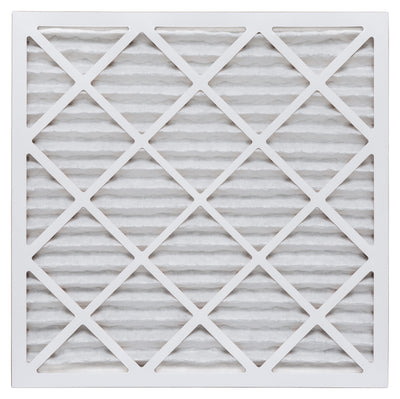The Importance of Improving Air Quality in Schools
Air Flow and Air Filtration Are Important Factors in a Child's Ability to Learn
With the back-to-school season beginning soon, educational facilities across the country should be considering ways to keep children healthy when they return to the classroom. While COVID-19 is still a top concern for school officials, other health issues should be included in back-to-school preparations.
The EPA weighs in on school air quality
According to the Environmental Protection Agency (EPA), indoor air pollution is among the top five environmental risks to public health, which means maintaining good air quality in schools should be a top priority.
A common effect of higher pollutants inside school buildings is shown by the increased number of days missed due to asthma symptoms. With nearly one in 13 school-aged children in the United States diagnosed with asthma, reducing potential irritants in the classroom is critical to improving student learning overall.
What is IAQ? Indoor Air Quality
Beyond children with chronic illnesses such as asthma, indoor air quality (IAQ) has been linked to every student's ability to learn, and in a recent study, IAQ was a proven factor in test performance.
Here are a few highlights from that study
In schools that were given new air filters, "students' scores improved by .18 of a standard deviation in reading and .2 of a standard deviation in math, compared to students’ performance in the schools that did not receive air filters." The increase was comparable to what is expected when schools decrease class sizes or provide tutoring.
Schools that received new air filters benefited from lower absenteeism – of both students and teachers.
Cleaner air results in clearer thinking.
Air Quality Guidelines for Schools
The EPA's list of potential problems resulting from poor indoor air quality include
- Increased long-term and short-term health problems for students and staff, such as cough, allergy symptoms, sinus infections, etc.
- Increased absentee days due to asthma and other respiratory illnesses
- Impacts on student and staff performance
- Stressed relationships between staff, students, and teachers
- Negative publicity for schools with widespread IAQ issues
The long list of potential woes can be mitigated by following the EPA's reference guide to IAQ in schools. The document focuses on the types and sources of indoor air pollution, diagnosing the symptoms and causes of IAQ issues, and resolving those issues.
A key factor in both potential causes and resolutions is your school's ventilation system
10 ways to improve air quality in schools
When a building's HVAC system is properly maintained, it provides consistent movement of clean air throughout the indoor space. When it is not well cared for, it can contribute to the spread of pollutants such as volatile organic compounds (VOCs), dust, mold, bacteria, and viruses.
Since airflow is a key concern, the Center for Disease Control (CDC) recommends the following steps for improving school ventilation systems
- Make sure the HVAC system is regularly serviced and meets the code requirements for acceptable indoor air quality in schools.
- If practical, reduce or eliminate indoor air recirculation and bring in as much outdoor air as possible.
- Increase the system's total airflow allowed to ensure the air is filtered as much as possible.
- Replace HVAC filters regularly to prevent dust build up
- Make sure your settings allow the air supply to be consistent throughout the day.
- Set the fan control switch to "on" instead of "auto" to ensure air flow does not stop.
- Extend your HVAC system's active times to two hours before and two hours after the building will be occupied.
- Increase the level of air filtration to as high as possible to reduce or eliminate as many pollutants as you can.
- Size, install, and replace all air filters according to the manufacturer's instructions.
- Consider portable air cleaners in areas that could use additional attention such as a nurse's office or a sick/isolation room.
Understanding that school budgets can be tight and are often one of the first fiscal items cut in tough economic times means finding affordable ways to keep school ventilation systems maintained and running efficiently is important.
Factory Direct Filters is a reliable source for quality air filters for school ventilation systems at discounted prices. With standard and custom filter sizes available at bulk quantity pricing, facility managers trust Factory Direct Filters to improve the IAQ in their buildings up to EPA standards.


